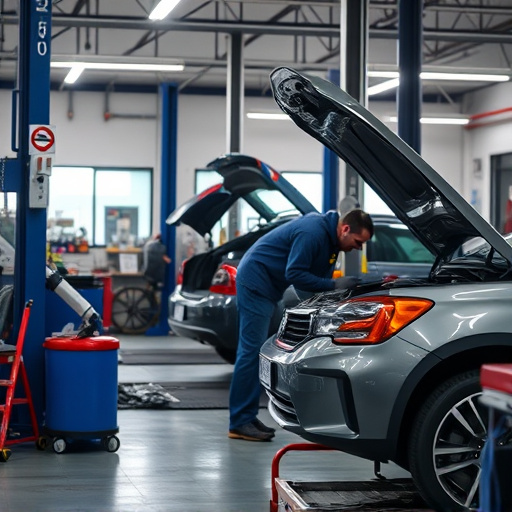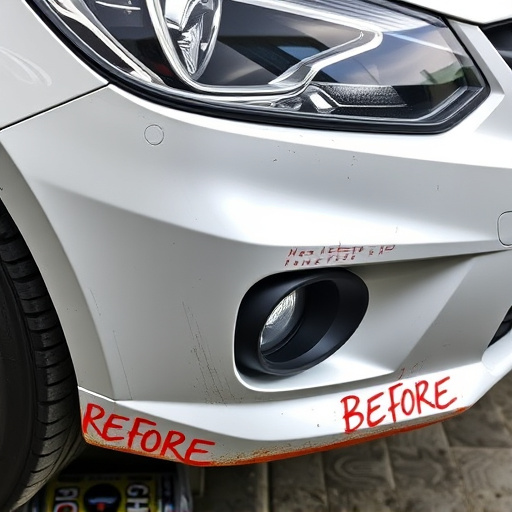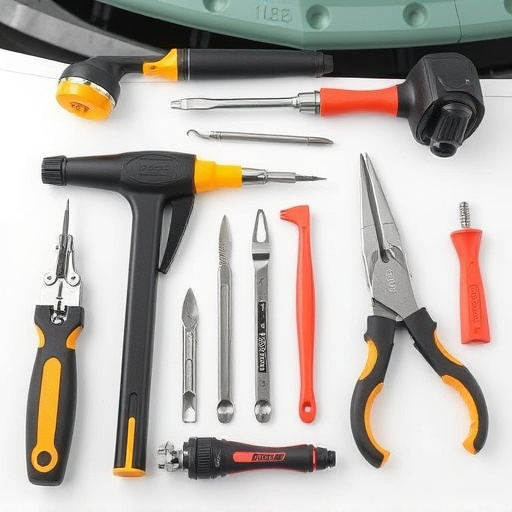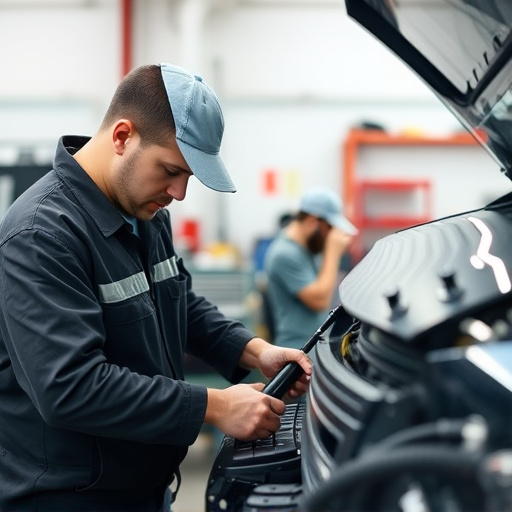Tesla's seatbelt pretensioner reset is a vital safety procedure after minor accidents to ensure optimal protection. Regular resetting prevents over-deployment and maintains system effectiveness in emergencies, enhancing passenger security and potentially reducing repair costs. Proper calibration and adherence to Tesla guidelines by professionals are crucial for safe and efficient operation.
In today’s digital era, understanding Tesla’s advanced safety systems like seatbelt pretensioners is crucial. The seatbelt pretensioner, a key component in crash protection, automatically tightens belts to reduce impact. However, over time, these systems can need resetting for optimal performance. This article explores the function of Tesla seatbelt pretensioners, explains when and why to reset them, and provides a step-by-step guide to restore full crash protection after the reset process.
- Understanding Tesla Seatbelt Pretensioners
- When and Why to Reset the System
- Restoring Crash Protection After Reset
Understanding Tesla Seatbelt Pretensioners
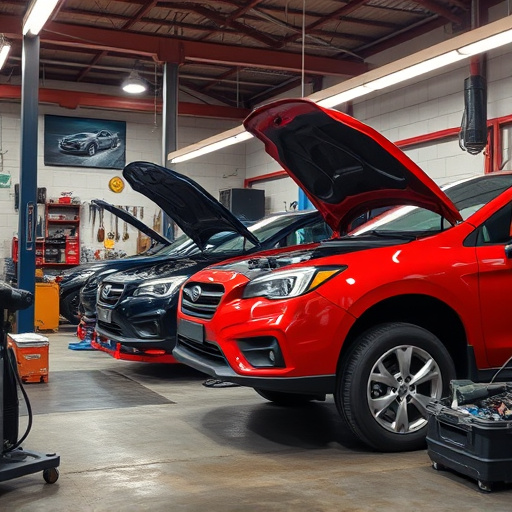
Tesla’s seatbelt pretensioners are advanced safety features designed to secure occupants during a collision. These mechanisms work in conjunction with airbags to provide optimal protection. When a crash is detected, the pretensioners actively tighten and pull on the seatbelts, reducing the risk of ejection and minimizing the impact force on the body. This rapid response can be life-saving, especially in high-speed accidents.
Understanding how these systems function is crucial for vehicle owners to recognize when they need Tesla seatbelt pretensioner reset services, similar to how a Mercedes Benz repair might address similar safety components. A fender bender or minor collision may not trigger the pretensioners, but even seemingly minor incidents can cause internal adjustments to be set incorrectly. Regular maintenance and proper resetting ensure that these crucial safety features remain effective, ready to protect passengers in the event of an unexpected crash.
When and Why to Reset the System
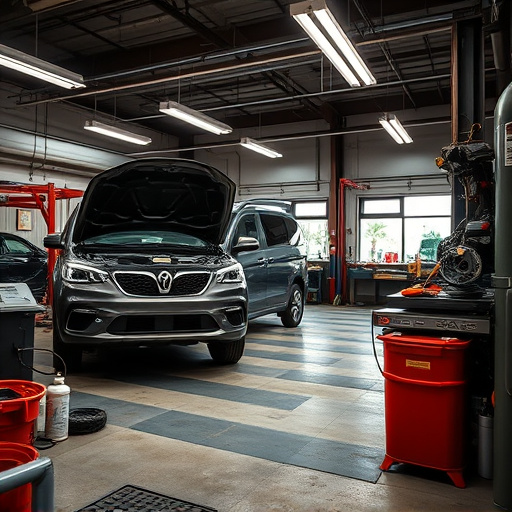
The Tesla seatbelt pretensioner reset is a crucial safety feature that should be understood and utilized by all vehicle owners. This process is recommended when there has been a minor collision or accident, even if no significant damage is visible. The seatbelt pretensioners are designed to protect occupants during a crash by tightening the belts automatically, but over-deployment can occur due to minor incidents. Resetting the system ensures that these pretensioners function optimally and effectively during a real emergency, providing full crash protection.
Regularly checking and resetting your Tesla’s pretensioners is vital for maintaining optimal safety. Even seemingly insignificant fender benders or bumps against obstacles can cause internal mechanical issues in the pretensioner mechanism. Similar to how a car scratch repair restores a vehicle’s appearance, a seatbelt pretensioner reset ensures the system is ready to protect passengers, minimizing potential collision damage repair costs and most importantly, enhancing passenger safety.
Restoring Crash Protection After Reset
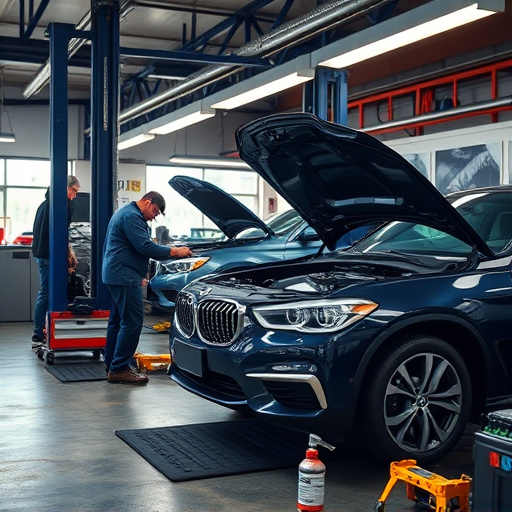
After performing a Tesla seatbelt pretensioner reset, it’s crucial to understand that restoring crash protection is paramount. The reset process reinitializes the system, ensuring that every component, including the pretensioners, operates optimally in case of an accident. This involves calibrating the sensors and mechanisms responsible for swiftly securing occupants, minimizing the risk of severe injuries.
For those relying on professional automotive body shop services or fleet repair specialists, understanding the implications of a seatbelt pretensioner reset is essential. Auto glass repair and other maintenance tasks may become more intricate post-reset. Therefore, maintaining proper documentation and ensuring all repairs align with Tesla’s guidelines is vital to guarantee both safety and optimal vehicle performance.
The Tesla seatbelt pretensioner reset is a vital step in maintaining optimal crash protection for all passengers. By understanding the system and knowing when to initiate a reset, owners can ensure that their vehicle’s safety features operate at peak performance. After resetting, it’s crucial to verify full functionality during driving to guarantee everyone’s safety on the road.


